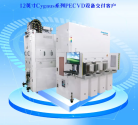The other big takeaway from this is the top-heavy concentration of market share in a handful of design/OEM companies, which really narrows down the options for downstream suppliers since if certain customers pullback, they are left with little pipeline to fill capacity.There are no customers for Samsung < 7nm, almost complete 0
"Weaker than expected volumes from Chinese customers..." - really means "US Sanctions fxxxked us"
The biggest customers for these cutting edge nodes are AMD, nVidia, QCOM, and Apple, all are TMSC.
Korea is in a tough spot because their economy is top heavy with conglomerates but other than Samsung they don't have many design/OEMs that can utilize those services, and I would argue that Samsung's outsized presence probably crowds out other players. And a smaller company would probably be even more risk averse in choosing Samsung as a partner due to performance and conflicts of interest so they would probably stick to TSMC anyway.
Outside of China there just aren't many high volume design/OEM partners either at advanced nodes and the ones that would utilize Samsung as a partner would probably expect lower prices due to Samsung's standing compared to TSMC which would also hurt their margins. It would be interesting to see how this plays with out SMIC's capacity expansion and how that is allocated going forward between Huawei which is a big driving force but also the other designers/OEMs.

